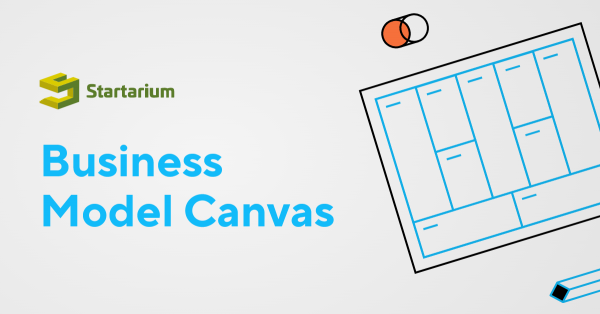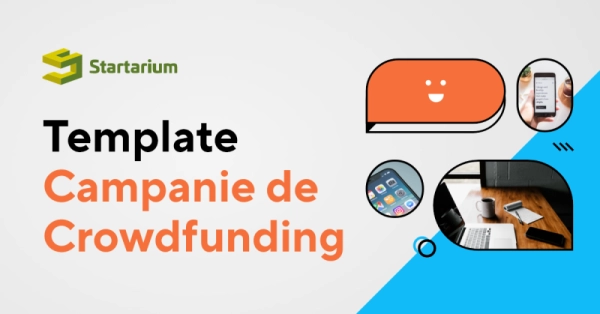The right funding at the right time - this should be the "compass" that guides you when you need funds to accelerate your business growth. Every funding tool has its own advantages and disadvantages - go through them all before making a choice!

Before looking at every tool individually, there are a few things you have to think about which are even more important than funding. This will save you from a lot of trouble if you take them into account when choosing a funding method:
1. Non-financial capital: money is not that hard to find, we are in a favorable period from this point of view, entrepreneurs have many options available, but non-financial capital is much more important, whether it means know-how or connections.
2. Non-financial costs: the difficulty of obtaining funding (time, bureaucracy), the commitments you take during the funding period and, as the case may be, after the implementation of the funded project.
3. Reality check – it is not that uncommon for an investor to ask you for a development or scaling rate that you cannot support. Be constantly aware of the capacity you and your team have.
Business Angel ⋅ Venture Capital ⋅ Private Equity ⋅ Investment funds ⋅ Initial Public Offer (IPO)
An angel investor is a person willing to use their own resources for small startups or entrepreneurs, usually in exchange for equity in the company. These resources do not consist only of capital, but also the experience, time and contacts of the investor.
Venture capital is a form of private equity and a type of financing that investors provide to small businesses with exceptional growth potential or to companies that have grown rapidly and are ready to expand. However, it doesn't always have to be money; it can come as technical or managerial expertise.
Private equity is equity or an interest in an entity that is not publicly listed or traded. Being a source of investment capital, private equity comes from high-net-worth individuals and companies that buy shares of private companies or want to gain control of public companies with the intention of delisting them from public stock exchanges.
These funds are a way of association of several investors who put their money together in order to invest it in financial instruments, the results of such investments being then shared pro rata between the fund's investors, depending on each one's holdings. An investment fund offers a wider selection of investment opportunities, greater management expertise and lower investment fees than individual investors could achieve. Types of investment funds include mutual funds, exchange-traded funds, money market funds, and hedge funds.
An initial public offering refers to the process of offering shares of a private corporation to the public. An IPO allows a company to raise equity capital from public investors. An IPO is often considered synonymous with "listing on the stock exchange", because once the IPO ends, the shares of the company can be traded freely on the stock exchange where it took place.
Many of the entrepreneurs who have just opened a business look at this route with great confidence and want to follow it, which is understandable considering that it is very often presented in the books for new entrepreneurs.
In short, we could call it the "corporate American dream". You have an idea, you polish it, you meet a business angel who invests money in your business and maybe gives you advice, and then, overnight, your company grows like others do in decades. This could happen, but you must be aware that the degree of corporatization will also increase: from the way the company is organized, the number of stakeholders, processes, departments, applicable regulations, they all increase in complexity and costs as the company moves forward on the corporate route.
I have also noticed among many entrepreneurs an internal struggle that is sometimes understandable, sometimes taken too far, against the development of the company: "Why should I hand over the control of the company I created?" I would answer this question with another question: "What would do you prefer: a large slice of a tiny pizza or a small slice of a huge pizza"?
|
Left to right:
|
||||
|
Business angel |
Venture capital |
Private equity |
Investment fund |
IPO |
Pros: Sustainable development, Professionalization, Corporatization
Cons: Founder participation, Founder control
Rewards-based crowdfunding ⋅ Equity crowdfunding ⋅ P2P lending
It consists of individuals donating to a project or business with the expectation of receiving a non-financial reward in return, such as goods or services at a later stage. A common example is a project or business offering a unique service (rewards) or a new product (pre-selling) in return for investment. This form of crowdfunding allows companies to launch with orders already on the books and cash-flow secured and gathers an audience.
Equity crowdfunding is the process whereby people invest in an unlisted company in exchange for shares in that company. A shareholder has partial ownership of a company and stands to profit should the company do well. The opposite is also true, so if the company fails investors can lose some, or all, of their investment. Because crowdfunding involves investing in a commercial enterprise, it is often subject to financial regulations.
Peer-to-peer (P2P) lending enables individuals to obtain loans directly from other individuals, cutting out the financial institution as the middleman. P2P lenders are individual investors who want to get a better return on their cash savings than they would get from a bank savings account.
The websites that facilitate P2P lending have increased considerably, and they set the rates and terms.
You have certainly heard about international platforms such as Indiegogo, Kickstarter or local ones, such as the crowdfunding platform developed by Startarium or Seedblink.
They are relatively easy-to-access programs, with low bureaucracy, and through them you can obtain funding in the form of a loan, in exchange of equity (you assign a percentage of the company) or against a reward (products/services against funds). In any case, after accessing the funds it is vital to constantly inform the investors about the following steps of your business (which means a large time-cost).
Please remember that equity crowdfunding, which entails the assignment of a part of the business, involves additional bureaucratic aspects.
Pros: Various options for start-ups and early-stage companies, greater patience of the "crowd" compared to that of classic funders (but see also the following counterargument)
Cons: Effort to constantly inform the "crowd", which can overwhelm you with unrealistic expectations
>> Find out what crowdfunding entails from our dedicated courses: All about crowdfunding I ; All about crowdfunding II
Operating lease ⋅ Capital lease
An operating lease is a contract that allows for an asset's use but does not convey ownership rights of the asset. Operating leases are considered a form of off-balance sheet funding - that is, the leased asset and its related liabilities (i.e. future lease payments) are not included in a company's balance sheet.
A capital lease is a contract entitling a renter to the temporary use of an asset and has the economic characteristics of asset ownership for accounting purposes. The lesser has ownership over the asset, which means that the purchased goods can be recovered relatively easily when a customer becomes insolvent or fails to meets its payment obligations.
They are relatively easy to access and involve much less monitoring than other tools.
The two types of lease differ in terms of accounting treatment and services that are added to the funding itself. For example, operating lease can be used for getting general (laptops, printers) or very specialized electronic equipment.
Check the accounting and tax treatments before accessing any lease.
Pros: Valuable services (in addition to the actual asset), leaner balance sheet (operating lease); deductible interest and depreciation (capital lease), the financial statements of the company matter less, much more relaxed monitoring
Cons: Niche equipment (usually) are excluded
Grants
A grant is an award given by one entity (typically a company, foundation, or government) to an individual or a company to facilitate a goal or incentivize performance. Grants are essentially gifts that do not have to be paid back, under most conditions. These can include education loans, research money, and stock options. Some grants have waiting periods before the grantee can take full ownership of the financial reward.
I see a significant appetite for this type of funding and there are still programs available on the market. But beyond the pros and cons, a relevant aspect in this case is the collaboration with the consultants, collaboration that start-ups steer away from due to budget reasons and the fear that you are often not sure that a specialist's contribution will be worth the investment.
When deciding whether or not to work with a grant consultant, also consider the time you would invest as an entrepreneur preparing an application that you don't know will be complete or accurate.
Grants mean a lot of paperwork and red tape – both during the application phase and afterwards. That's why I recommend that you reduce the time investment to a minimum, working with a consultant, who will be able to help you with the programs suitable for your business niche. Furthermore, consultancy costs are usually covered by the grant.
Pros: In some areas, they make up for the lack of classic funders
Cons: Bureaucracy (especially if you don't work with a specialized consultant!), monitoring, obligations (which can extend even after the completion of the project), some programs require own contribution (10%-50% of the goal value), which can be covered by bank loans; time, costs and additional conditions to consider.
Invoice discounting ⋅ Factoring ⋅ Overdraft ⋅ Bank loan
A factor is an intermediary agent that provides cash or financing to companies by purchasing their accounts receivables. A factor is essentially a funding source that agrees to pay the company the value of an invoice less a discount for commission and fees. Factoring can help companies improve their short-term cash needs by selling their receivables. The practice is also known as factoring, factoring finance, and accounts receivable financing.
Invoice discounting
It is an invoice funding facility that enables businesses to tap into the value of their sales ledger. When the company sends an invoice to a customer, a proportion of the total amount becomes available from the lender, providing working capital throughout the month. When customers pay their bills, the business reimburses the lender, plus a fee or interest. This type of funding is very similar to factoring, the main difference being that there is no need for the business to notify the customer.
An overdraft is a line of credit that the bank grants on a debit card. An overdraft allows the account holder to continue withdrawing money even when the account has no funds in it or has insufficient funds to cover the amount of the withdrawal. Thus, the holder has access to a loan that can be permanently renewed, up to a ceiling set by the bank. The loan bears interest and an overdraft fee is usually charged.
Bank credit/loan is the total amount of money a person or business can borrow from a bank or other financial institution A borrower's bank credit depends on their ability to repay any loans and the total amount of credit available to lend. Types of bank credit include car loans, personal loans, and mortgages.
Factoring is more suitable for more advanced stages, when you are already selling products and services and have a track record with your customers. In this case, the funder, called factor, can be a banking or non-banking company, and the funding can be done from the level of an individual invoice to the level of the entire portfolio of receivables.
The factor practically offers you 70-80% of the nominal value of an invoice upon presentation of the invoice, the balance being returned to you upon its full collection (also by the factor). Some programs also have the possibility of getting a payment defaults insurance.
As start-ups have a lower volume of invoices, this solution may not be the most suitable. Both factoring and banking products are actually solutions that are more suitable post-start-up, which is why we present them together.
Banking products: there are a lot of products on the market, but they are practically the same basic products with various trade names.
The basic products are: short-term loans or overdrafts for temporary/urgent needs and short-, medium-, and long-term loans for investments.
But the bank comes with conditions, don't look at it as an investor, it will ask you for a lot of transparency, reports, and you will also have to meet financial and non-financial conditions.
Pros: Cost vs. Control, leaner balance sheet (factoring), receivables insurance (factoring)
Cons: Monitoring, sometimes red tape, affordable post-start-up























